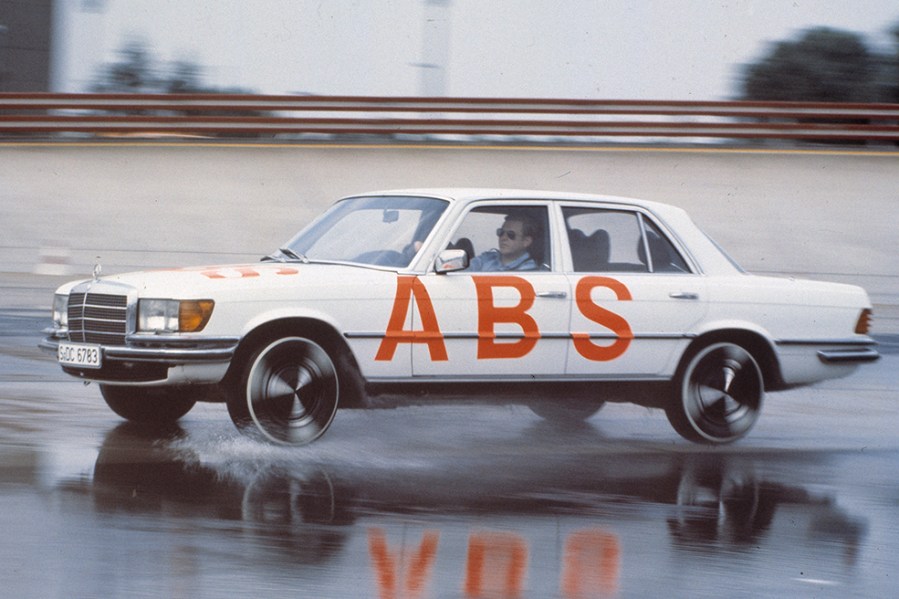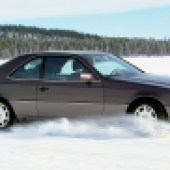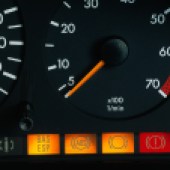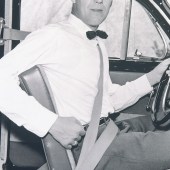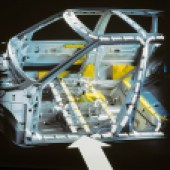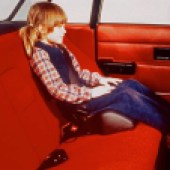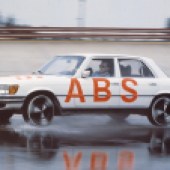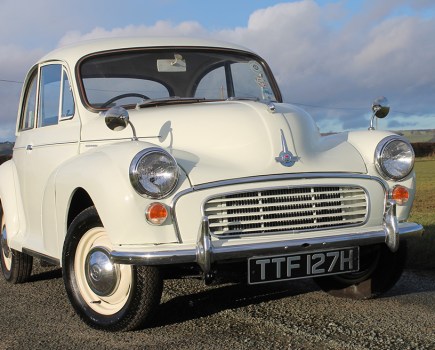The gradual evolution of car safety has contributed to declining deaths on our roads. We chart the history of the innovations – and acronyms – designed to keep us safer
Words: Simon Jackson Images: Getty
Putting the high-rise SUV driver barrelling down the high street with little regard for their surroundings to one side for a minute, statistics show that our roads are safer than ever. Since 2003 the number of incidents on our roads has fallen by 37 per cent, while the fatality rate has reduced by more than half. But the groundwork to achieve all this started a whole lot longer than 20 years ago – and led to a whole host of acronyms appearing on cars over a period of more than four decades.
The first part of the 20th century is not an era generally associated with safety-conscious motoring, and yet we’d already seen advents like the windscreen wiper (1903), rear view mirror (1911), indicators (1914), and laminated safety glass (1927) introduced. The first crash tests were conducted as far back as the 1930s and 1940s, while radial tyres were created by Michelin in 1946, greatly aiding grip.
Nevertheless, in the 1940s and 1950s the UK recorded its highest road fatality rates, meaning more innovations were needed. By the mid-1960s though, several factors were helping to turn the tide. For starters, attitudes were changing; drink driving was becoming socially unacceptable, and advances in medical treatments helped survival rates. While there were more people on our roads than ever before, and more occupants suffering serious injuries, road deaths were in decline. As a nation we weren’t necessarily becoming better drivers; rather, safety improvements to our cars were helping us survive incidents more often. So, how did we get there?
Seatbelt
Airbags were being developed in the United States as early as 1951, while Mercedes-Benz was working on the first energy absorbing crumple zones by 1952, but it would be years later before either went mainstream. Likewise, while the first disc brake had been developed all way back in 1902, it was 50 years before they were used on the Jaguar C-Type racer of 1953, and 1955 before the technology appeared on a production car courtesy of the Citroën DS. There was, however, one noteworthy safety milestone beyond compare – Volvo’s introduction of the first three-point seatbelts in 1959.
Engineer Nils Bohlin’s humble belt remains one of the most effective automotive safety measures of all time. Bohlin introduced three-point safety belts into series production on the Volvo PV544, and since its widespread adoption Volvo estimates that over one million lives have been saved as a result of it waiving its patent rights.
In 1967, it was written into law that all cars sold in Britain must have front seatbelts fitted, while the 1970s saw designers pay greater consideration to how pedestrians might fare in an impact with a car. Volvo also continued its good work; in 1972, its rearward-facing child seats were an industry-first, designed to help minimise child injuries during an accident.
In 1978 came the child booster seat, allowing forward-facing kids to wear three-point safety belts in the correct position. In 1990 Volvo would pioneer the world’s first integrated booster cushion.

Volvo engineer, Nils Bohlin, invented the three-point safety belt in 1959, it would go on to save an estimated one million lives all over the world
Electronic systems
In 1966 the Jensen FF became the first production car with anti-lock brakes, but it was 1978 before the first mass-market electronic system was available, Bosch buying a patent developed in 1971 and naming it ABS. The Mercedes W116 had it as an option, but it was the Mk3 Ford Granada of 1985 that became the first car to offer ABS as standard.
While the wearing of front seatbelts became compulsory in the UK in 1983, it was 1987 before the fitting of rear seatbelts become mandatory. At the same time, traction control began to appear on models from manufacturers like Toyota, BMW and Mercedes-Benz. Finally, airbags began to appear widely in production cars too; but now as supplemental restraint systems (SRS), which integrated the seat belts and the airbag into a restraint system, rather than the airbag being considered an alternative to the seat belt. The W126 Mercedes-Benz S-class of 1981 was the first car so-equipped to be sold in Europe, with Porsche and Honda following in 1987. Sticking with Porsche, its 959 supercar was the first car to sport a tyre-pressure monitoring system (TPMS).
In another legislatorial car safety move, the wearing of rear seatbelts for adults became compulsory in Britain in 1991 – a decade that also gave rise to myriad new safety acronyms. Volvo’s Side Impact Protection System (SIPS) became one of the most well-known, featuring energy-absorbing materials, a cross-member in the floor and reinforced seats. Side-impact airbags followed in 1994, with its Whiplash Protection System (WHIPS), designed to tackle common whiplash injuries in car collisions, arriving in 1998. That same year the inflatable curtain was another leap forward in safety. It saw an airbag concealed in the car’s headliner, inflating rapidly to help protect the occupant’s head during a side impact or rollover.
Mercedes-Benz were next with new car safety acronyms; its computerised electronic stability control (ESC) system was developed with the help of Bosch and first appeared on S-Class in 1995, subsequently being adopted by a wide range of manufacturers, including Toyota, Volvo, and Audi. Mercedes-Benz also introduced its Brake Assist System (BAS) in 1996.
BMW’s Dynamic Stability Control (DSC) was its own take on electronic stability control, the acronym also appearing on Land Rover, BMW, MINI Jaguar, Ford and Mazda vehicles. Other acronyms include VSC (Vehicle Stability Control) for Toyota, and PSM (Porsche Stability Management).
In the later part of the 1990s the European New Car Assessment Programme (Euro NCAP) was formed, crash testing and publishing its findings on new cars. The Volvo S40 was one of the first high achievers; a four-star car for Adult Occupant Protection. Finally, in 1997 Volkswagen and child-seat maker Britax developed Isofix, allowing drivers to attach a child seat with ease.
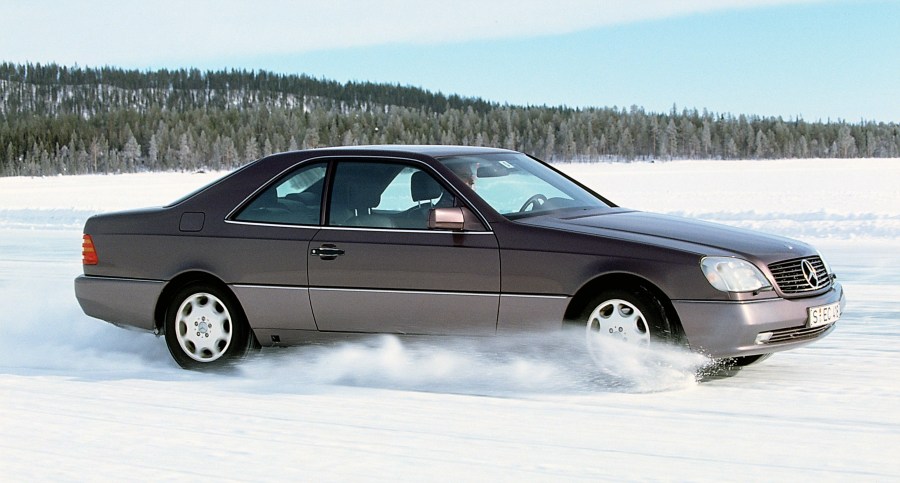
Mercedes’ ESP being tested on an S-Class coupe in 1994
Modern advances
As we entered the new millennium, fresh car safety measures continued at a rapid pace – and so did the acronyms. Citroën was the first car maker to offer a Lane Departure Warning system in Europe, appearing in its C4, C5 and C6 models in the mid-2000s.
Volvo was at it again too. Its Roll-Over Protection System (ROPS), a sophisticated electronic roll stability control system, was designed in 2002 with the growing popularity of SUVs in mind. In 2003, the Swedes blind spot system (BLIS) aimed to avoid accidents while parking or changing lanes, and the firm was once again at the cutting-edge with the introduction of autonomous emergency braking on the XC60 of 2008.
There was another push for pedestrian safety during the same period; the Volvo V40 sported the world’s first pedestrian airbag, while the Jaguar XK and Citroën C6 pioneered the pop-up bonnet – designed to minimise pedestrian injury in the event of a collision. Volvo was once again at the fore with its pedestrian detection system of 2010, a system that automatically applied the car’s brakes if it detected a pedestrian via onboard camera and radar technology.
The last couple of decades have seen more and more electronic car safety aids entering mainstream adoption. At the same time, Euro NCAP has added further requirements to its roster of tests, and just a few years ago, several manufacturers introduced speed caps on new vehicles. In 2020, safety pioneer sent a strong signal about the dangers of speeding by reducing the top speed of its new cars to 112mph.
Of course, many of our traditional classics make do without these modern technologies, and there’s an argument that this leads to better drivers who are more aware of the limitations of their machinery. But nothing stays static, and as our classic timeline moves forward, so does the car safety technology that filters through.
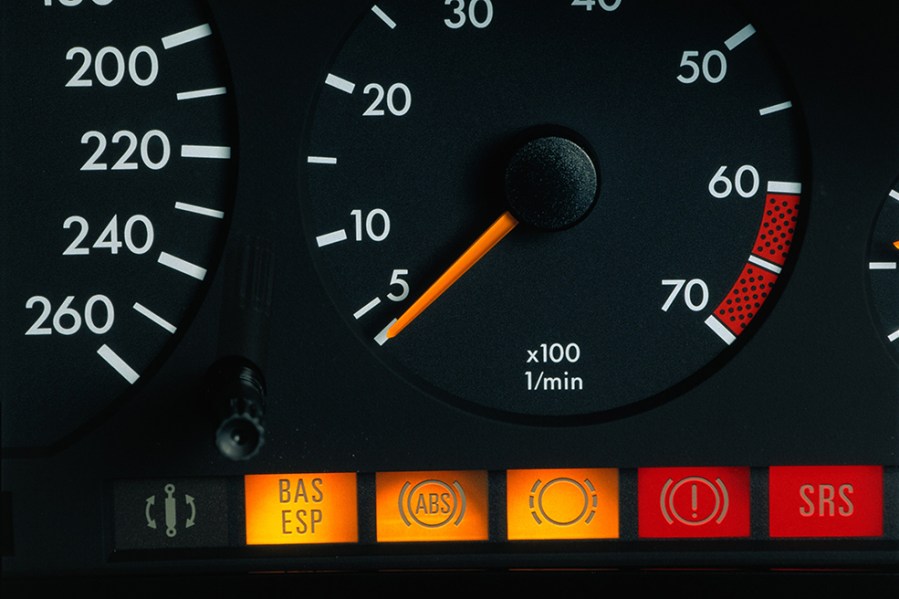
BAS, ESP, ABS and SRS – just some of the safety acronyms that have cropped up over the past five decades
Car safety innovations timeline
1903
Wiper blades are developed by Mary Anderson.
1911
Rear view mirrors are used for the first time
1914
The earliest indicators arrive.
1927
Laminated safety glass is used to prevent windscreens shattering.
1934
General Motors performs the first crash test.
1936
The Road Traffic Act dictates a 30mph speed limit in built-up areas.
1946
Radial tyres arrive.
1951
Walter Linderer creates the first airbag.
1952
Mercedes-Benz invents the crumple zone.
1953
Jaguar wins Le Mans with the pioneering disc brake.
1959
Volvo introduces the three-point seatbelt.
1965
70mph motorway speed limit is introduced in the UK.
1966
Front seat belts made mandatory for new cars in Europe.
Jensen FF is the first car with an anti-lock braking system.
1967
By law all cars sold in Britain must be fitted with front seatbelts.
1968
Volvo introduces front-seat head restraints.
1983
Wearing front seatbelts becomes compulsory in the UK
1987
Rear seatbelts become compulsory in the UK.
Traction control is introduced by BMW, Mercedes-Benz and Toyota
1991
Volvo introduces its side impact protection system (SIPS)
Wearing rear seatbelts is made compulsory.
1994
Volvo pioneers side air bags.

1995
Mercedes-Benz and Bosch introduce electronic stability control (ESC)
1996
Mercedes-Benz introduces Brake Assist System (BAS)
1997
European New Car Assessment Programme (Euro NCAP) is launched.
Isofix is developed by Volkswagen and Britax.
2000
The first Lane Departure Warning Systems arrive.
2004
Volvo introduces a blind spot information system (BLIS).
2005
The pop-up bonnet is available on certain Jaguar and Citroën models.
2008
Volvo develops autonomous emergency braking.
2010
Volvo develops a pedestrian detection system.

